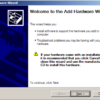Traceroute(on window system, command will be "Tracert") is a most common and essential troubleshooting tool for network administrators. Even normal users who are facing some routing, latency or packet lost issue would be familiar with this tool. On DOS prompt, ‘tracert’ command syntax is "tracert hostname or IP address x.x.x.x". For example, "tracert www.ipBalance.com" from my location today and the output might look like below:
C:\>tracert www.ipBalance.com
Tracing route to www.ipBalance.com [74.52.183.18]
over a maximum of 30 hops:
1 33 ms <1 ms <1 ms L100.DSL-01.WASHDC.verizon-gni.net [71.114.48.1]
2 <1 ms <1 ms 1 ms P1-3.LCR-06.WASHDC.verizon-gni.net [130.81.34.26]
3 <1 ms 2 ms <1 ms so-4-2-0-0.BB-RTR2.RES.verizon.net [130.81.28.146]
4 1 ms 2 ms 2 ms 0.ge-5-2-0.BR2.IAD8.ALTER.NET [152.63.32.161]
5 <1 ms 1 ms <1 ms 204.255.168.30
6 10 ms 1 ms 1 ms cr2.wswdc.ip.att.net [12.122.134.18]
7 4 ms 2 ms 13 ms cr1.attga.ip.att.net [12.122.1.173]
8 3 ms 1 ms 1 ms cr2.dlstx.ip.att.net [12.122.28.174]
9 1 ms 2 ms 1 ms gar10.dlstx.ip.att.net [12.122.138.117]
10 1 ms 1 ms 2 ms 12.87.41.150
11 4 ms 64 ms 40 ms te7-2.dsr01.dllstx3.theplanet.com [70.87.253.10]
12 50 ms 2 ms 1 ms 76.fd.5746.static.theplanet.com [70.87.253.118]
13 1 ms 2 ms 5 ms 9a.fe.5746.static.theplanet.com [70.87.254.154]
14 54 ms 7 ms 13 ms gator190.hostgator.com [74.52.183.18]
Trace complete.
C:\>
How traceroute(tracert) works:Tracert sends out an ICMP echo packet to the named host, but with a TTL of 1; then with a TTL of 2; then with a TTL of 3. So totally sent three packet unless you modified perameters. Traceroute(Tracert) will then get ‘TTL expired in transit’ message back from routers or network gears until the desination node finally is reached and it responds with the standard ICMP ‘echo reply’ packet.
Round Trip Times: Each millisecond (ms) time in the table is the round-trip time that it took (to send the ICMP packet and to get the ICMP reply packet). The faster (smaller) the times the better. ms times of 0 mean that the reply was faster than the computers timer of 10 milliseconds, so the time is actually somewhere between 0 and 10 milliseconds. From above example, we saw 165ms to get final destination. Is that high round trip time? Yes it is. If traceroute from end-node at east coast of North America to end-node of continents. RTT would be below (of course it is in general output, result will be vary in link to ISPs) Round Trip Time(RTT) from North America to Asia = 180ms ~ 220ms
Round Trip Time(RTT) from North America to Europe = 120 ~ 180ms
Round Trip Time(RTT) from North America to South America = 120 ~ 140ms
Round Trip Time(RTT) from North America to Australia = 180 ~ 250ms
The table below lists the characters that can appear in the traceroute command output.
IP Traceroute Text Characters
|
Character |
Description |
|---|---|
| nn msec | For each node, the round-trip time in milliseconds for the specified number of probes |
| * | The probe timed out |
| A | Administratively prohibited (example, access-list) |
| Q | Source quench (destination too busy) |
| I | User interrupted test |
| U | Port unreachable |
| H | Host unreachable |
| N | Network unreachable |
| P | Protocol Unreachable |
| T | Timeout |
| ? | Unknown packet type |
Now we have more idea about how traceroute works, but in real world especially output in ISP backbone area. Do you think we can use a output from your traceroute that is shown packets drops within ISP backbone? It might or might not. Why?
See our another article "what is obstacle of ICMP in ISPs backbone network"
I hope it is informative for you and thank you for viewing




 The www.ipBalance.com runs by a volunteer group with IT professionals and experts at least over 25 years of experience developing and troubleshooting IT in general. ipBalance.com is a free online resource that offers IT tutorials, tools, product reviews, and other resources to help you and your need.
The www.ipBalance.com runs by a volunteer group with IT professionals and experts at least over 25 years of experience developing and troubleshooting IT in general. ipBalance.com is a free online resource that offers IT tutorials, tools, product reviews, and other resources to help you and your need.

![[Splunk] – Basic search fields and commands logo_splunk.png](https://ipbalance.com/wp-content/uploads/2009/06/logo_splunk-100x80.png)

![[Cisco] Access Server setup for the LAB(CCIE)](https://ipbalance.com/wp-content/uploads/2009/07/accessserver0-100x100.png)
